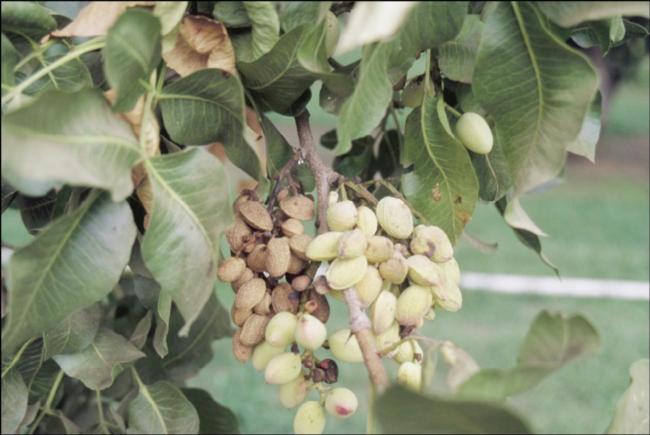Panicle and shoot blight, caused by a
Fusicoccum sp. (e.g.
Botryosphaeria dothidea), is the most serious disease of California pistachios. Fusicoccum is entirely splash dispersed. Infections which occur during early season spring rains can remain latent until later in the growing season. Although the influence of rain and temperature on infection have been described (Michailides and Morgan, 1992), no decision support system has been developed to advise growers when to spray. Therefore, while the disease is successfully controlled with strobilurin fungicides, growers apply as many as seven fungicide sprays per season to control this disease. The Botryosphaeria infection model (BIM) as developed by Driever, et al., 2002 was designed to run on California Irrigation Management Information System (CIMIS) data, and states that infection events occur when rains ? 1 mm per h for ? 4 h with temperature ? 11 °C. CIMIS stations do not have electronic wetness sensors. The Leaf Wetness Model (LWM) (Morgan et al., 2009) predicts that high risk infection events occur when rains ? 4 mm at a given temperature (T) result in a wetness duration threshold (W) of W=-7.8+397/T and a medium risk threshold of W=-6.9+220/T. Wetness periods interrupted by ? 12 h were added together (Fig. 1).
LWM Figure 1


